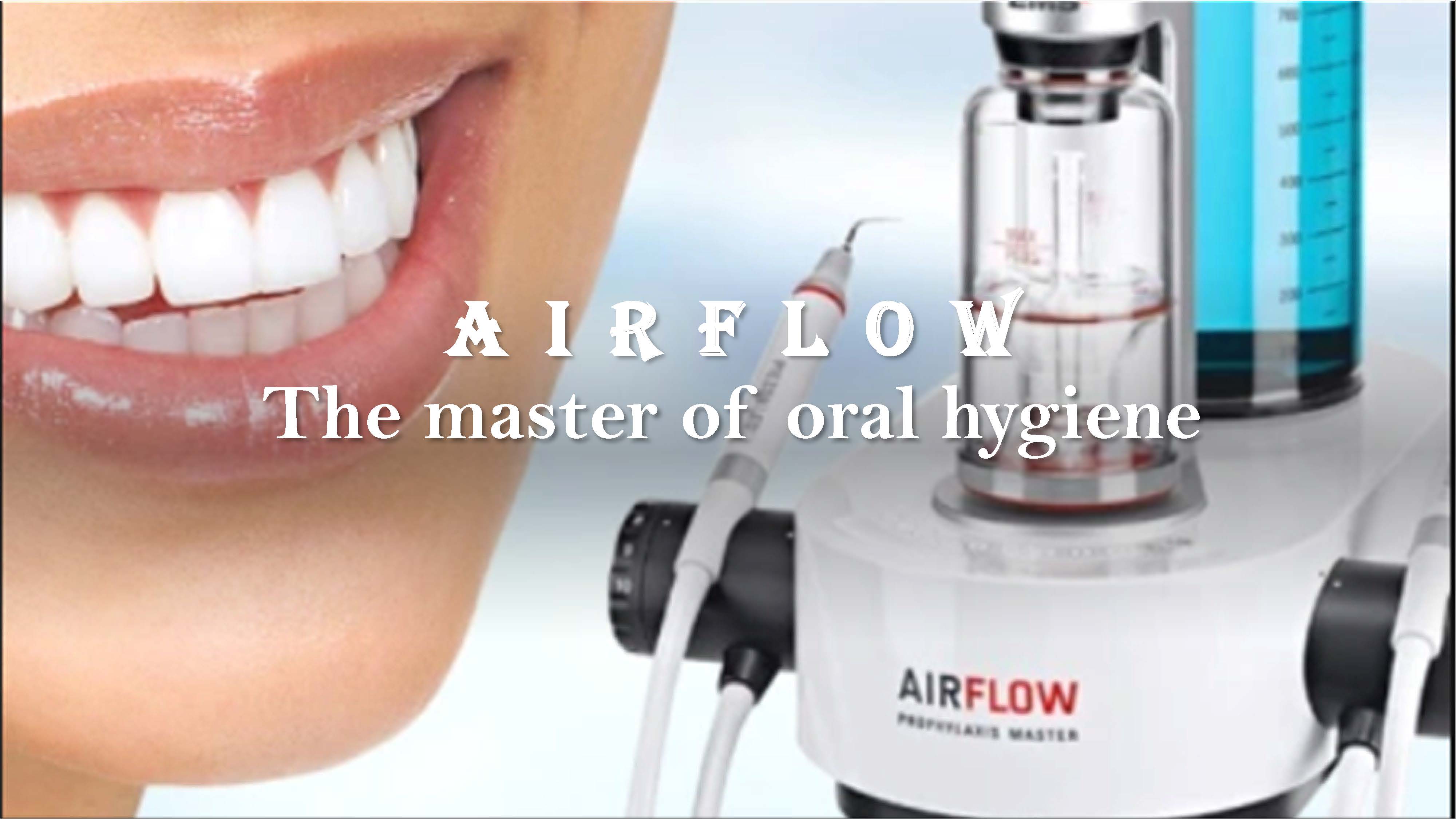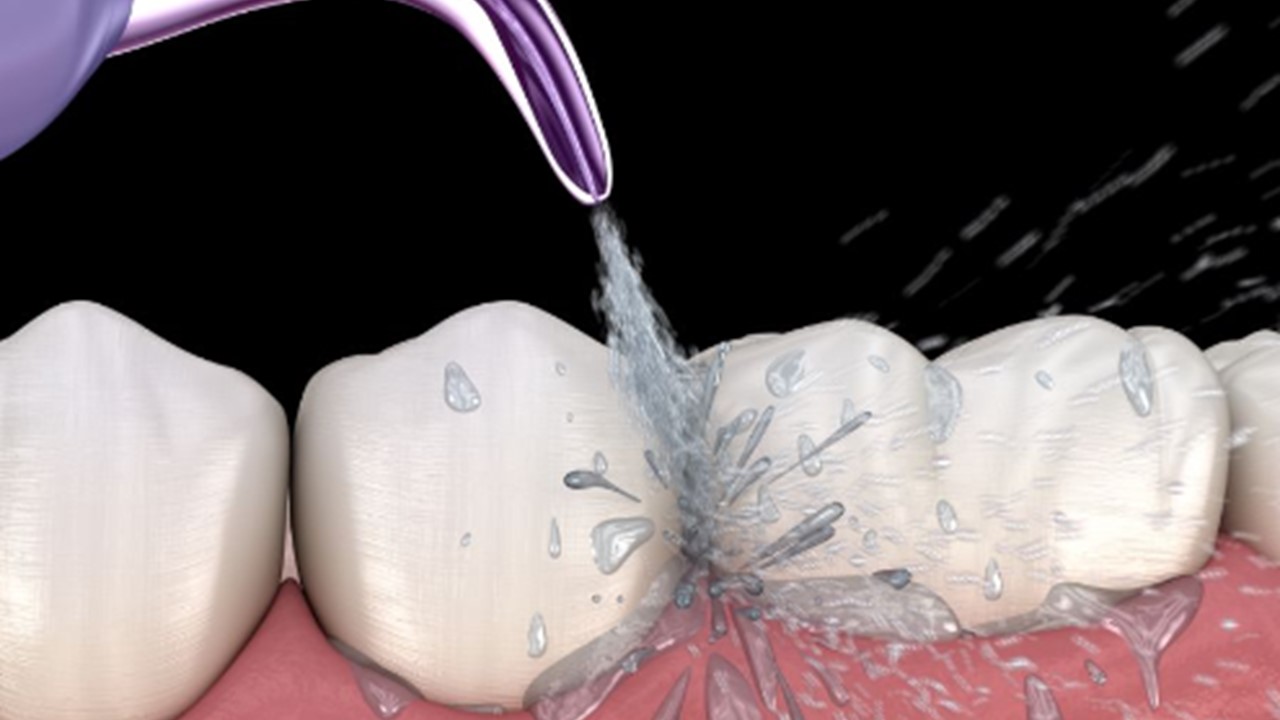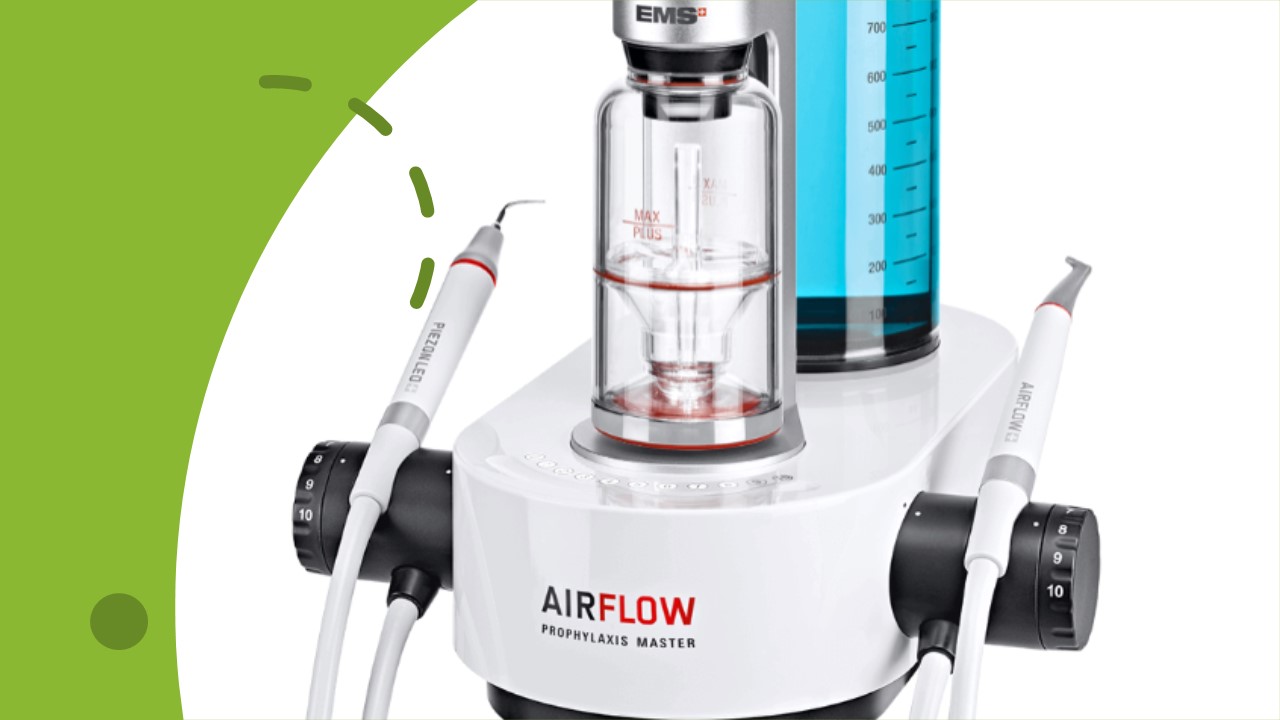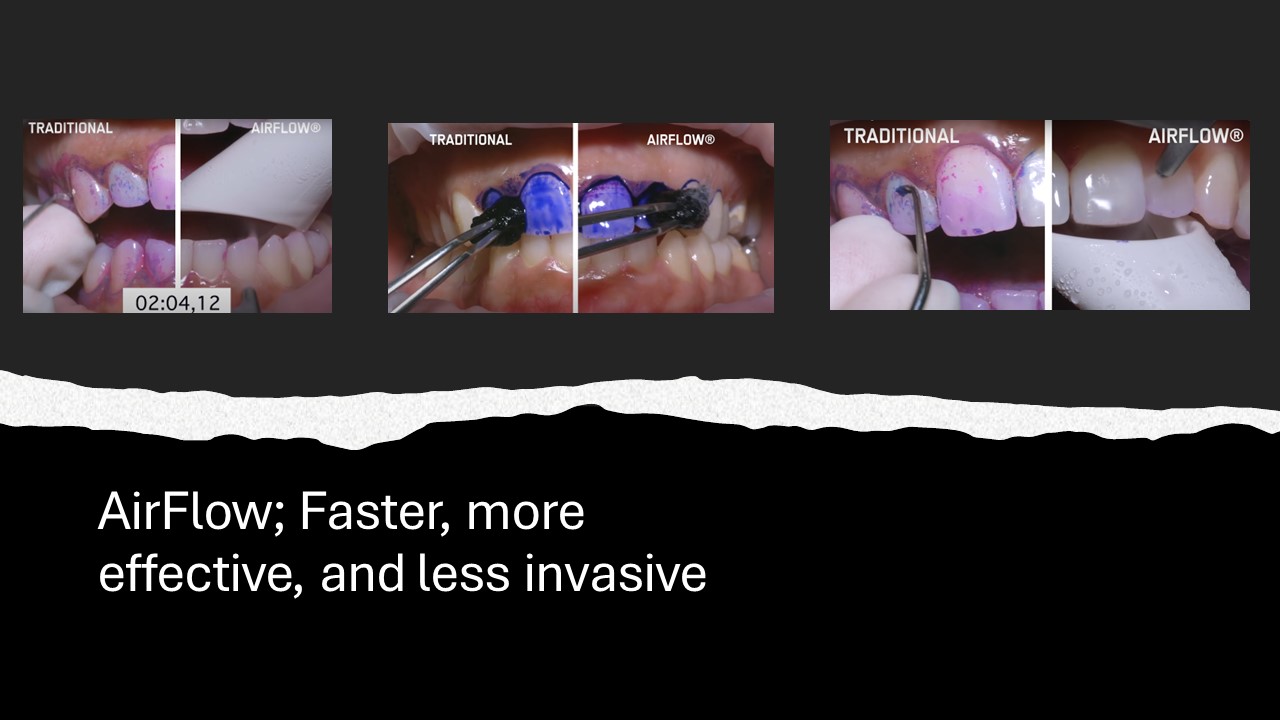
Keeping up with a dental routine may fail to fight against our relentless enemies, tartar and plaque. You might need to take more drastic steps against these sticky germs. This method, which has been around since the 1980s, can lighten the colour of teeth by one to two shades. However, it cannot make them as white as professional whitening methods.
The Airflow teeth cleaning method is notable for its ability to clean teeth without inflicting the gums and teeth with any permanent damage or irritation. Airflow treatment is an effective method for achieving a germ-free oral cavity by thoroughly cleansing the teeth and gums.
What is airflow teeth cleaning?

Airflow teeth cleaning is a non-mechanical method of removing tartar and plaque from teeth by applying air in a stream. The treatment is conducted using special tools made just for it. This technique requires the use of biocompatible cleansers, such as sodium bicarbonate or glycine, which do not cause any damage to the teeth. The cleansers are applied to the teeth through the use of water and high-pressure air.
Origins of Airflow Treatment
EMS Electronic Medical System, a Swiss company, introduced the airflow technique in the 1980s and continues to lead the industry. This technique was initially employed to eliminate plaque that had accumulated on the periphery of metallic orthodontic braces. Thanks to today's technology, airflow dental treatment can be applied at any pressure level needed. Furthermore, erythritol-based powders significantly lessen sodium bicarbonate's irritating effect on tooth enamel.
Airflow Teeth Cleaning Pieces

Airflow teeth cleaning has a simple structure consisting of several parts. The compressor generates the desired air pressure in airflow therapy. Pressures ranging from 2 to 4 bars are used during the treatment, taking into account the specific requirements and health status of the patient.
In airflow teeth cleaning, water is one of the three components of the treatment. The compressor forces the pressurized air and water out of the mixture. The cleaning powder, sodium biocarbonate, is mixed with pressured water and applied to the tooth surface.
The Process of Airflow Teeth Cleaning

The treatment procedure includes;
- A detailed oral examination made to determine the location and density of dental plaque.
- Preservative application to the lips, such as petroleum jelly, prior to treatment. This keeps the lips moisturised during treatment and protects them against the abrasive effects of plaques and cleaners.
- Applying discloser to the plaque areas to give them colour. Dentists use colour gel to help identify plaque during treatment.
- The water is brought up to 40 degrees and then pumped with cleaners. The dentist thoroughly cleans the designated areas.
- After the clean-up, the interior of the mouth is thoroughly sterilised from colourant, plaque, and cleaner leftovers.
How long and how often the airflow protocol is used.
Airflow teeth cleaning averages thirty minutes. However, it dependent on the amount of plaque and the treatment area. It takes longer to clean inner tooth plaque, known as the lingual part of the teeth.
The National Library of Medicine published a study that indicated that after one year of follow-up, airflow treatment had an 82% success rate. Even so, the frequency of recurrent visits is totally dependent on how well the patient takes care of their teeth and how often they consume foods with dyes, like tea, coffee, and red wine. Airflow dental treatment will likely be needed within six months if you eat these foods and smoke and drink excessively.
Benefits of Airflow Teeth Cleaning
- The airflow teeth cleaning removes plaque and germs without adversely affecting teeth and gums.
- The pressure and composition of the cleaning powder can be modified to accommodate the gum's sensitivity.
- Airflow treatment is a non-invasive technique that doesn't require mechanical scraping.
- In contrast to conventional methods, this treatment can be applied more rapidly and can yield comparable outcomes.
- It offers a more comfortable treatment experience.
Potential Risks and Disadvantages of airflow teeth cleaning
When airflow teeth cleaning is applied correctly, it has minimal drawbacks, with most of them arising from negligence in its implementation. Here are some of the drawbacks of the treatment:
- If not applied with proper hygiene practices, fragments of plaque can penetrate the gums, resulting in severe gum irritation.
- Failure to properly adjust the pressure can result in gingival irritation and gingival recession.
- Patients with respiratory difficulties may experience respiratory tract narrowing as a result of sodium bicarbonate ingestion.
- There may be a temporary sensitivity in the teeth following the treatment.
Airflow vs. Traditional Cleaning Methods
Airflow and traditional cleaning methods are different yet complementary approaches that work towards the same goal. The use of airflow during treatment allows for a more pleasant experience for the patient and a substantial reduction in treatment time. In traditional methods, the tools used to remove calculus wear down the enamel, while in airflow, it's almost nonexistent. However, the risk of ingestion of the cleaners used in airflow treatment may pose dangers for certain patients.
Airflow Post-Treatment Care
Assuming consistent dental hygiene, teeth treated with airflow will not revert to their earliest colour. On the other hand, in the absence of proper dental care, plaque can form in just 72 hours. These are perfectly normal outcomes if you continue to brush your teeth for less than two minutes and do it consistently for a few days.
Recommendations for patients.
Sticking to a stricter routine of dental hygiene will help your airflow dental treatment last longer. Just a few instances of negligence are all it takes to ruin your teeth.
Final Thoughts
Due to its profound influence on tooth colour, airflow teeth cleaning has gained widespread notoriety as an aesthetic dental procedure. However, the removal of plaque in the mouth provides notable benefits that go beyond just how it looks. To maintain a healthy lifestyle, it is crucial to prioritise the well-being of your mouth.
By thoroughly cleaning the plaque in your mouth, you can protect your overall health from various potential risks. Plaque serves as a gateway for harmful germs to enter the body, so maintaining good oral hygiene is crucial.
If clinics and patients could do it, scientists would like to make this treatment compulsory for everyone once a year.
